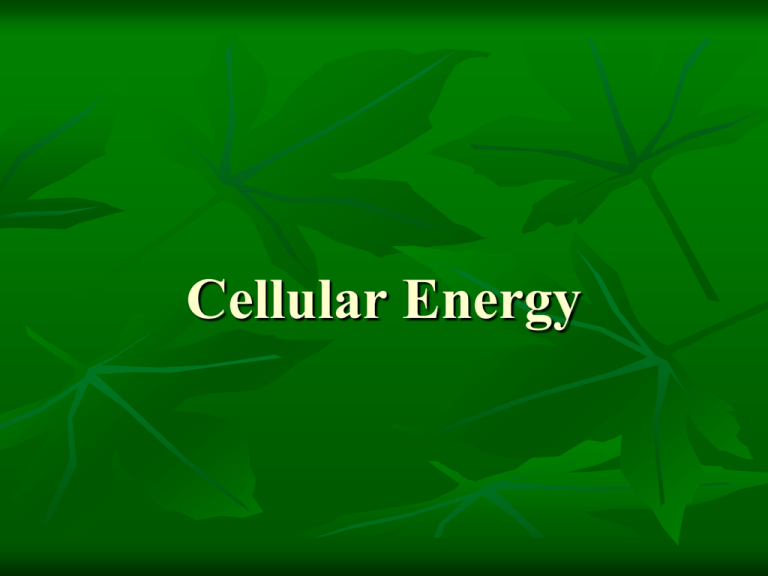Photosynthesis and Cellular Respiration
advertisement

Cellular Energy Objectives Students will review plant/ animal cells and prokaryote/eukaryote Students will draw and label a diagram of the cell energy cycles. Students will compare and contrast autotrophs and heterotrophs Students will explore photosynthesis and cellular respiration Today you need: your notebook, pen or pencil , EOC Workbook, Textbook, worksheet Bellwork: Write the answers to the worksheet in your notebook (170-171) (Jansen invented the microscope) Prokaryote Animal Cell Eukaryote Plant Cell Draw and label the diagram on the next slide. (add a leaf around the chloroplast and an person around the mitochondria) All energy starts with the sun! Life on Earth is almost entirely solar-powered with nearly all organisms depending ultimately on food made by photosynthesis, which uses energy from sunlight. This is radiant energy Comparing sources of cell energy Autotrophs (plants & algae) (producers) Make own food from sun Photosynthesis in chloroplasts (Cellular respiration in mitochondria) Heterotrophs (all other living things) (consumers) Eat others (autotrophs and other heterotrophs) Cellular respiration in mitochondria Photosynthesis Method of converting sun energy into chemical energy usable by cells – Photoautotrophs: use light – Chemoautotrophs: use chemicals (in places where it is too dark) Photosynthesis Photosynthesis takes place inside chloroplasts in plant leaves Chlorophyll (pigment) in chloroplasts gives green color chloroplasts Energy conversion Photosynthesis This takes the radiant energy of the sun and converts it to chemical energy stored in the plants as carbohydrates (glucose) Cellular Respiration Transformation of chemical energy in food into chemical energy cells can use: ATP Overall Reaction: C6H12O6 + 6O2 → 6CO2 + 6H2O + energy Sugar + oxygen ---> carbon + water + energy dioxide 2 kinds of Cellular Respiration Anaerobic (no oxygen) cellular respiration (aka fermentation) Yields 2 ATPs – Aerobic (with oxygen) cellular respiration Yields 36 ATPs – Photosynthsis CARBON + WATER DIOXIDE ----> SUGARS + OXYGEN Discuss the lab – What part do each play? Elodea Snails What can they be compared to on land? What gases does each take in and give off? How does light affect the results? EOC Coach workbook Answer questions 1-4 on page 26 Complete the worksheet Use your textbook. Copy the information from the worksheet into your notebook and complete it using your notes and your textbook. 170 - 171 In your textbook Read Factors of Photosynthesis on page 214 and answer the following question: How does this problem relate to global warming? What long term changes will this cause in the environment?





